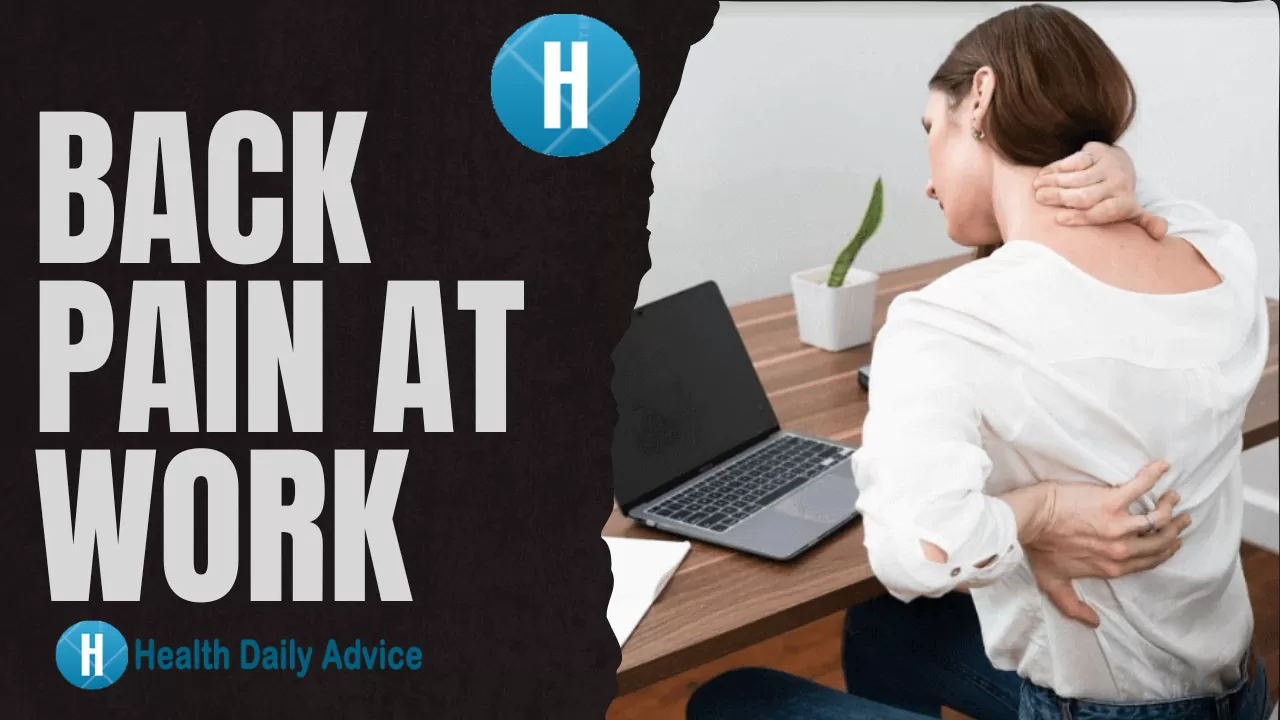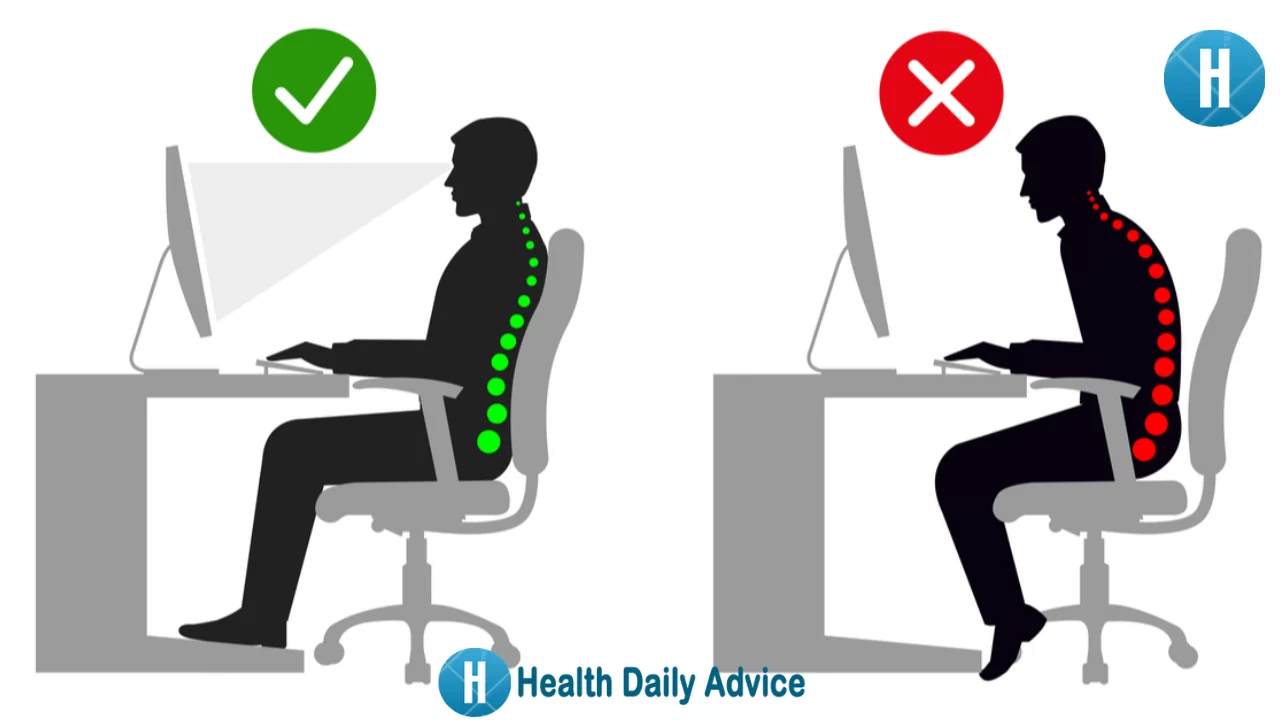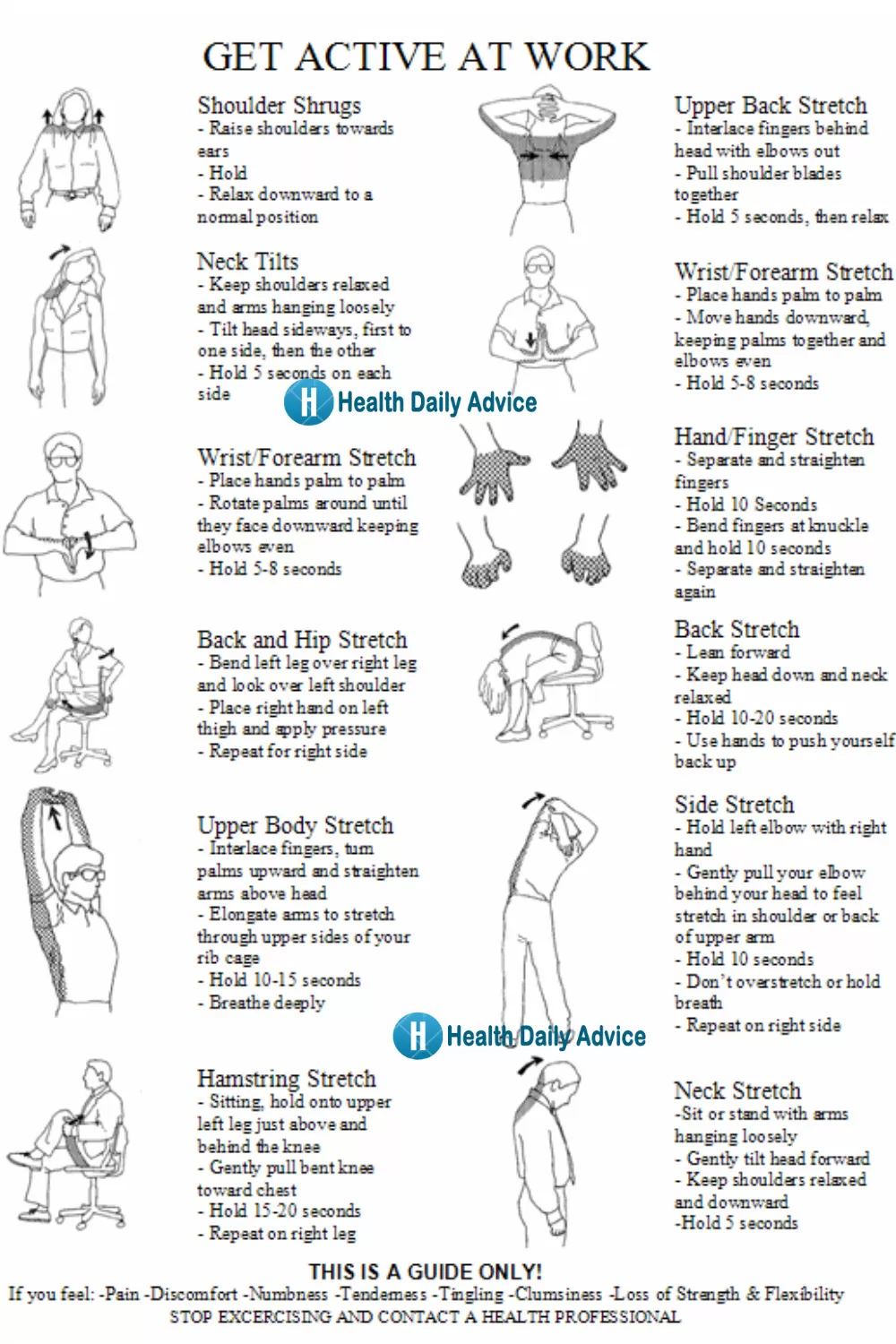Introduction:
Here is a Post About Back Pain at Work: Tips for Desk Workers and Physical Laborers
As the world shifts towards a more sedentary lifestyle, back pain has become an increasingly common problem. It affects people of all ages and professions, but it is especially common among desk workers and physical laborers. In this article, we will explore some tips and techniques that can help alleviate back pain and prevent it from becoming a chronic problem.

Understanding Back Pain
Back pain can manifest in many different ways. It can be a dull ache or a sharp, stabbing pain. It can be localized to one area or radiate throughout the back and down into the legs. The severity and duration of back pain can also vary from person to person.
Back pain can be caused by a variety of factors, including poor posture, muscle strain, herniated discs, and degenerative conditions like arthritis. It can also be a result of accidents, injuries, or medical conditions like scoliosis.
Causes of Back Pain in Desk Workers
Desk workers are particularly prone to back pain due to their sedentary lifestyle and prolonged sitting. Sitting for extended periods can lead to poor posture and muscle imbalances, which can put extra strain on the back muscles and spine.
In addition to poor posture, other common causes of back pain in desk workers include using an unsupportive chair, an improperly positioned computer screen or keyboard, and inadequate breaks to move around and stretch.
Causes of Back Pain in Physical Laborers
Physical laborers, on the other hand, are at risk of back pain due to the physical demands of their work. Lifting heavy objects, twisting, and bending can all put a strain on the back muscles and spine, leading to pain and discomfort.
Other causes of back pain in physical laborers include using improper lifting techniques, using equipment that is too heavy or awkwardly shaped, and not taking enough breaks to rest and stretch.
Tips for Desk Workers to Prevent Back Pain
Maintain Good Posture:
Sit up straight and align your ears, shoulders, and hips. Keep your feet flat on the ground and avoid crossing your legs.
Take Frequent Breaks:
Get up and move around at least once every hour. Take a short walk or do some simple stretches to relieve muscle tension.
Stretch Regularly:
Perform simple stretches that target the back, neck, and shoulders. Hold each stretch for 15-30 seconds and repeat several times throughout the day.
Use an Ergonomic Chair:
Invest in a chair that provides proper support for your back and promotes good posture.
Adjust Computer Screen and Keyboard Height:
Ensure that your computer screen is at eye level and your keyboard is positioned so that your arms are at a comfortable angle.
Tips for Physical Laborers to Prevent Back Pain
Lift with Your Legs, Not Your Back:
Bend your knees and squat down to lift heavy objects, rather than bending at the waist and using your back muscles.
Use Proper Lifting Techniques:
When lifting, keep the object close to your body, maintain a neutral spine, and avoid twisting or jerking motions.
Stretch Before and After Work:
Perform dynamic stretches that warm up the muscles before work, and static stretches that help to cool down and release tension after work.
Use Appropriate Equipment:
Use tools and equipment that are designed to reduce the strain on your back and make your work easier and more efficient.
Stay Hydrated:
Drink plenty of water throughout the day to keep your muscles and joints lubricated and functioning properly.
Treatment Options for Back Pain
If you are experiencing back pain, several treatment options can help alleviate your symptoms and improve your quality of life. These include:
Over-the-Counter Pain Relievers:
Non-steroidal anti-inflammatory drugs (NSAIDs) like ibuprofen and aspirin can help to reduce inflammation and relieve pain.
Hot and Cold Therapy:
Applying heat or cold to the affected area can help to reduce pain and inflammation. Use a heating pad or warm towel for chronic pain, and ice packs for acute pain or swelling.
Massage Therapy:
Massage can help to relax tense muscles and improve blood flow to the affected area, promoting healing and reducing pain.
Chiropractic Care:
Chiropractors can perform spinal adjustments and other treatments to alleviate back pain and restore proper alignment and function.
Physical Therapy:
A physical therapist can work with you to develop a personalized exercise program that targets your specific needs and helps to strengthen and stretch your muscles.
Conclusion
Back pain is a common problem that can affect people of all ages and professions. Whether you are a desk worker or a physical laborer, there are several steps you can take to prevent back pain and alleviate your symptoms. Maintaining good posture, taking breaks to stretch and move around, and using appropriate equipment can all help to reduce the strain on your back and prevent injuries. If you are experiencing back pain, there are several treatment options available, from over-the-counter pain relievers to massage therapy and chiropractic care. By taking care of your back and seeking treatment when needed, you can maintain a healthy and pain-free lifestyle.
FAQs
The best way to prevent back pain is to maintain good posture, take frequent breaks to stretch and move around, and use appropriate equipment.
Over-the-counter pain relievers, hot and cold therapy, and stretching and exercise can all help to alleviate back pain at home.
If your back pain is severe, lasts for more than a few days, or is accompanied by other symptoms like numbness, tingling, or weakness, you should seek medical treatment.
Chiropractic care is generally safe and effective for treating back pain, but you should consult with a licensed chiropractor to determine if it is right for you.
Yes, physical therapy can help to strengthen and stretch your muscles, improve your range of motion, and reduce your pain and discomfort.
Yes, physical therapy can help to strengthen and stretch your muscles, improve your range of motion, and reduce your pain and discomfort.
Note:
So in This Post, Back Pain at Work: Tips for Desk Workers and Physical Laborers What other points can you think of/have experienced? Let me know in the comments.
If you found this helpful feel free to share your experience if you can relate to these points and if you are comfortable share
For More Articles Related to the Back Pain at Work Stay Tuned To our Site: Health Daily Advice











